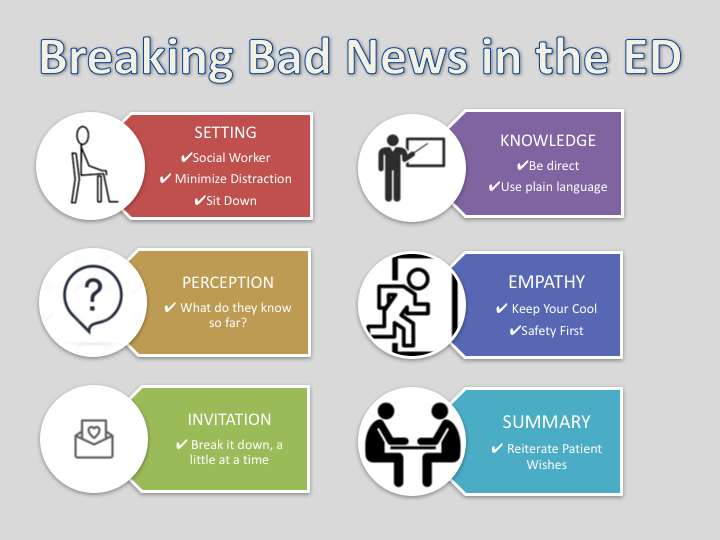Breaking Bad (News)
Posted On 20 July 2020
Delivering bad news in a compassionate way can make this difficult situation easier to cope with for patients, their families and clinicians themselves. Thanks to Hailey and Kendall who helped us workshop these skills at Taupo Hospital.
SPIKES
The SPIKES model was first published in The Oncologist in 2000 as a protocol for delivering bad news to cancer patients.

Since then, it has been adopted more widely and used by clinicians in various circumstances to communicate difficult news to patients in a way that is clear, supportive and compassionate.
- Setting: Pick a private and quiet place to talk to the patient
- Perception: What is the patient’s perception of their medical condition at present
- Invitation: How much do they want to know?
- Knowledge: Share the news
- Empathy: Take time to allow the patient to express their emotions and respond
- Summary: Patients often miss the details after the initial shock of bad news, summarize the main issues and plan moving forward.
For a ward or primary care setting:
Set up
- Think about what you want to say in advance.
- You may wish to suggest to the patient that they are accompanied by a friend or relative.
- Choose a time and place which will allow for privacy and quiet, considered discussion. Make sure there is enough seating in the room, and turn off or mute any electronic devices so that the patient has your full attention.
- Establish rapport with the patient and maintain eye contact.
- Allow enough time for the patient and/or their relative to express their emotions and ask questions.
Perception
- Use open-ended questions to determine the patient’s understanding of their condition. This will help you tailor the way you deliver the information and where you begin.
- Check that the patient is able and willing to hear what you will say. They may give you an opening to start the discussion, or they may try to avoid hearing what you are saying.
Invitation
- Most patients will indicate that they want full information, but some may shun information as a coping mechanism.
- If patients do not want to hear details, you can offer to answer any questions in the future or speak to their family or friend.
- Use language appropriate to the patient’s level of understanding. It can help to reflect the patient’s words and body language.
- Avoid unnecessary jargon and euphemisms, which could impair the patient’s comprehension and create a barrier to communication.
- Be sensitive to how the patient is reacting, and provide information at an appropriate pace.
Knowledge
- Warning the patient that you have bad news may reduce the shock of disclosure.
- Give the patient and their friend/relative enough time and space to absorb the information and ask questions.
- If there is any doubt about the prognosis, explain this and the options for clarifying uncertainty.
- Give the patient information regarding next steps, such as follow-up appointments. If this is not possible, offer them a realistic timescale of events and reviews. The patient should also be told who will be in charge of their care and how they can contact them.
- Reassure the patient of ongoing support. This will help them to cope and feel less isolated.
- The patient and relative/friend may differ in how much information they want or require. If you sense a disparity, check that the patient is happy for you to speak to their friend/relative separately.
Empathy
- Don’t make assumptions about what the patient might be feeling. Encourage them to express their concerns, and respect their wishes about how much information they are prepared to hear.
- Observe and validate the patient’s emotions and give them enough time and space to express their reactions.
- Remember that all patients are different.
Strategy and summary
- Make sure the patient has understood by asking them to briefly summarise the main points of the conversation. Encourage them to express their concerns.
- Provide reading material for the patient to absorb when they are ready.
- Suggest that the patient note down any questions they’d like to ask you at your next meeting, so you can be sure you are appropriately exploring their understanding.